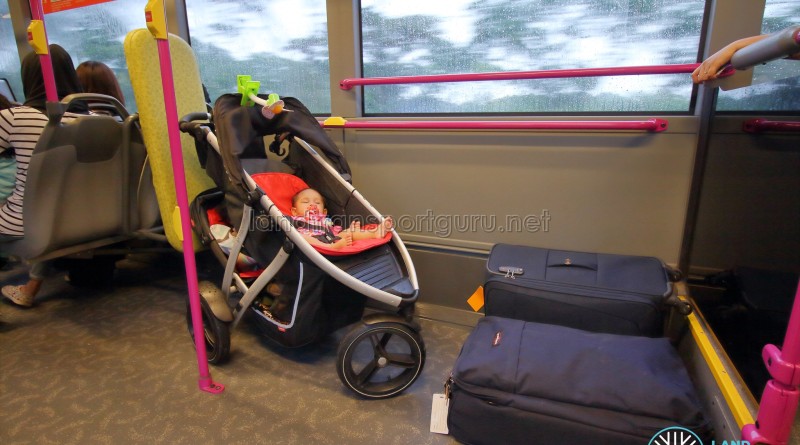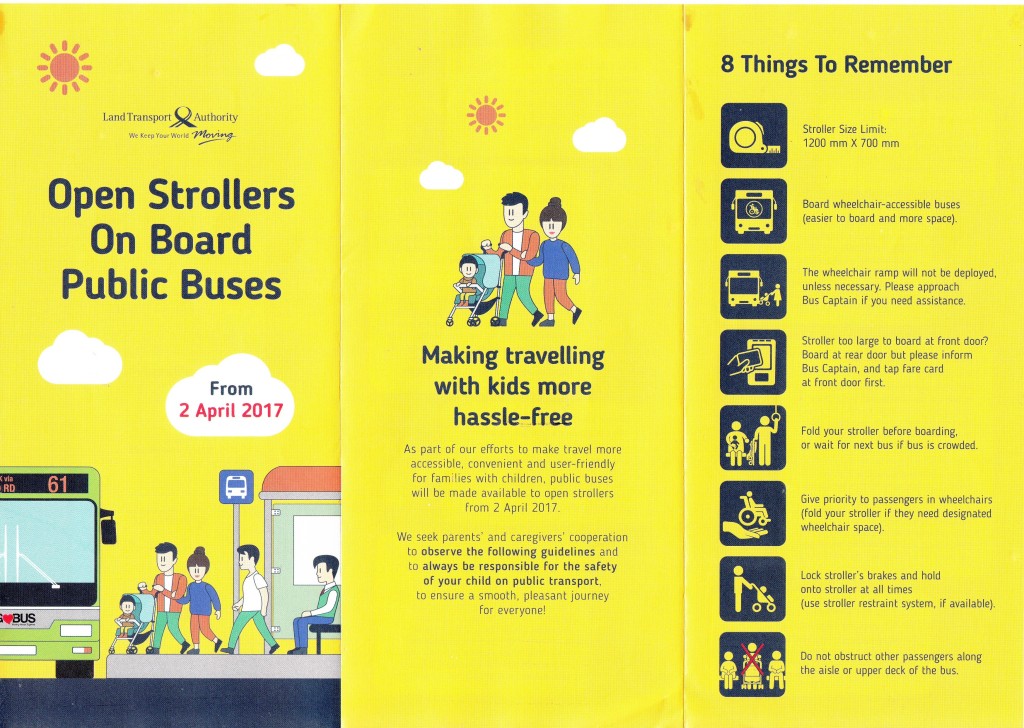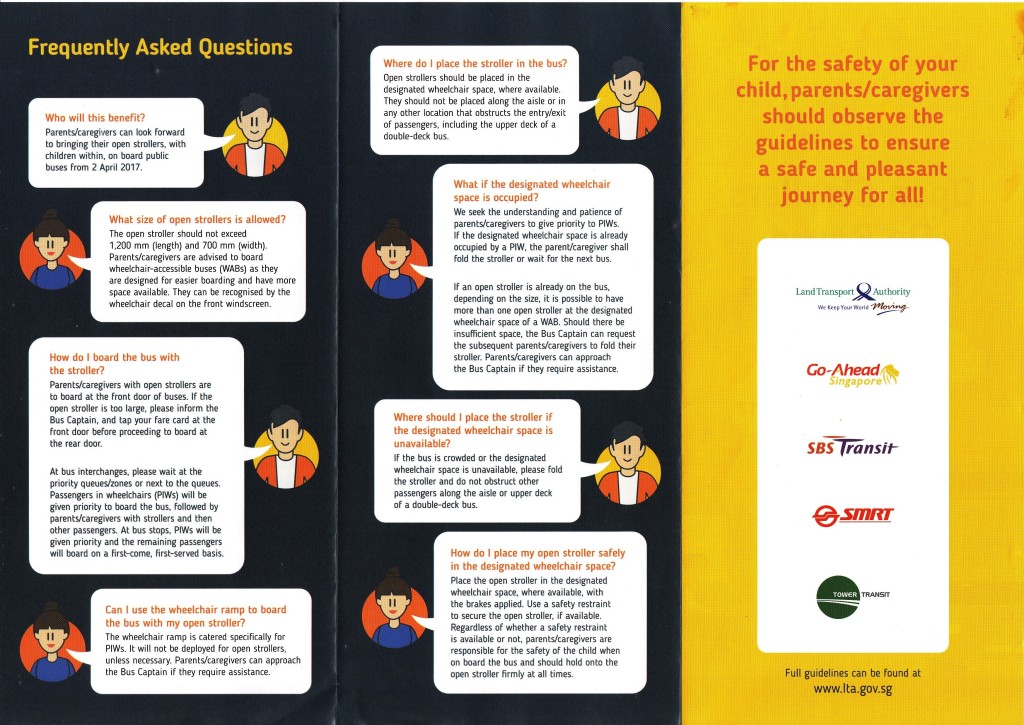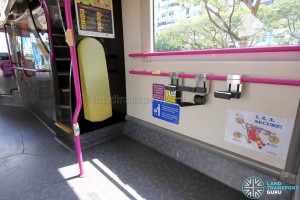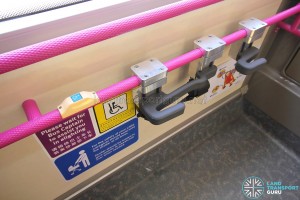From 2nd April 2017, families with children will be allowed take open strollers onboard all public buses without having to fold them. The move is in response to feedback from parents and caregivers and a step towards a more inclusive public transport system. Parents and caregivers are advised to be fully attentive and take responsibility for the safety of their children, holding on tight to the open strollers at all times.
The move was first announced during the Committee of Supply Debate 2017 in early March 2017. Previously, open strollers were not permitted on public buses as they pose a safety risk to the child and other commuters if the bus brakes sharply or swerves suddenly. Strollers had to be folded for boarding, often leaving parents or caregivers struggling to manage with carrying their child and the stroller onboard the bus.
New Guidelines
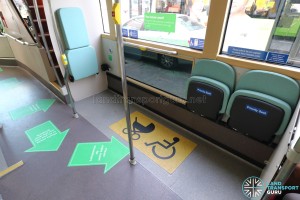
In a set of guidelines released by the LTA, open strollers are allowed on all public buses, but parents/caregivers are encouraged to bring open strollers onto wheelchair-accessible buses as they are designed for easier boarding and have more space available. On non-wheelchair-accessible buses, parents/caregivers are also encouraged to fold the stroller for the safety of the child. The open stroller should also not be greater than 1.2m long or 70cm wide. Parents/caregivers are responsible for the child’s safety throughout the journey, including boarding and alighting.
Parents/caregivers with open strollers can also board the bus from the rear door, but only when boarding from the front door is not possible due to obstruction. They should inform the Bus Captain first, and make fare payment at the front of the bus. Open strollers must not be placed in the aisle or in any other location that obstructs the entry or exit of passengers, including the upper deck of a double-deck bus. Finally, passengers-in-wheelchairs will be given priority to use the designated wheelchair spaces.
Eight key points to remember are:
- Size Limit
Strollers should be no larger than 1200mm X 700mm. - Board wheelchair-accessible buses
These buses are more spacious, with wheelchair bays able to accommodate strollers without obstruction. The wheelchair ramp will not be deployed unless necessary. - Board at the front door
If the stroller is too large, tap farecard / make payment at front door first, inform Bus Captain, then board from the rear door. - If the bus is crowded when boarding
Strollers should be folded, or wait for the next bus. - If the bus gets crowded while stroller is onboard
The stroller is not required to be folded - Priority for Passengers in Wheelchairs
If there is insufficient space in the bus after wheelchair boarding, strollers should be folded. - Secure stroller
Lock the brakes and hold onto the stroller at all times. Use the stroller restraint system, if provided. Parents and Caregivers are responsible for the safety of the child when on board the bus. - Do not block passenger movement
Open strollers cannot block the aisle, entry or exits of the bus.
Future Plans
Main Article: Stroller restraint system trial on Service 69
To improve safety, a stroller restraint system was developed to help parents and caregivers secure the strollers on board buses. In addition to holding on to their strollers throughout the journey, parents and caregivers are encouraged to use the restraint system where available.
The trial, which began on 29 June 2017, involved the installation of a restraint system on one bus plying Service 69. Check out the main article (Stroller restraint system trial on Service 69) for more details.
Gallery:
Related Content:
External Links & References:
- Committee of Supply 2017 – MOT
- Open Strollers to be Allowed on Public Buses – LTA
- Guidelines on open strollers on public buses – LTA (PDF)
Back to Bus Articles
